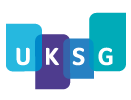Under pressure
The transformation of academic content presents both a direct challenge and new opportunities to the role of libraries. The content that we deliver is evolving and diversifying, not only from print to digital, but also from the traditional formats of book and journal article to new media such as research data and learning materials. Much of it is not even purchased or licensed by us, given the increase in what is available in the public domain or as open access (OA). Libraries are no longer defined by the collections within our buildings; the scope of the content we deliver and who we deliver it to is becoming difficult to define. Our focus is just as much about exposing and delivering university-generated outputs to the outside world as providing licensed and purchased content to our own user communities.
How we deliver that content is also changing: the traditional purchase and subscription models we have worked with comfortably for many years have been overtaken by a shifting landscape of demand-driven and e-textbook services. The impact of these new models should not be underestimated: they present a fundamental challenge to our professional ethics and require a shift in our thinking. Librarians have always worked on the premise that all the information we acquire is available to all our students and researchers. Licensing and delivering course-specific content to a subset of our community, though of course satisfying user need, does not sit comfortably with our principle of equitable access.
External pressures also impact on how we approach the delivery of content. The introduction of student fees has raised expectations of information provision, and universities are under pressure to avoid additional costs for students, such as library fines or the purchase of personal copies of textbooks or core readings. Students expect access to content in both print and digital formats, as they satisfy different needs. Many librarians are also working within the context of a parent institution’s growth agenda, needing to deliver more and diverse content to increasing student numbers.
Golden years
Libraries are grappling with the question of who drives the delivery of our content. In the past ten years, we have transitioned from developing and building collections on behalf of our users, through the hazy early days of demand-driven acquisition (DDA) when we handed over portions of our budget to allow our users to determine what content they needed. We have reached a point now where we need to lead on the establishment of a middle way: users determine the content, but we are developing tools and systems which we use alongside professional judgement to determine the most cost-effective and suitable method of delivery, whether through document supply, rental or purchase.
We know now that print as a format will not die completely: what we are striving for is the perfect balance of formats within our new hybrid environment. We require analytical tools to enable us to fully understand and compare the use of our digital and print resources and answer some difficult questions, not only about the preservation (or not) of our legacy print collections, but also about our current practices in delivering content. How do these new models compare in usage? What advantages do they provide our users, and how can this data inform our future practices and policies?
Even ten years ago, students needed to make regular physical visits to the library building to access materials, and library resources were still seen as an add-on to a course. At my own institution, library content now increasingly forms part of a complex web of information and resources delivered seamlessly to students through the virtual learning environment (VLE). This is made possible through the integration of the library reading list system with other relevant campus systems, and partnership with teams within the institution responsible for supporting the delivery of different types of content.
Let’s dance
Publisher-librarian relationships are evolving in tandem with developments in content, from customer-seller to collaborative partnerships enabling us to learn from each other and develop models for the delivery of content that suit us and our users. Libraries are now negotiating with publishers and academics to provide textbooks directly through VLEs, and we have an important role in ensuring that this method of delivery continues to provide value for money for our institutions. The boundaries between libraries and publishers appear to be blurring, as our focus shifts towards facilitating the creation and delivery of content created by our own academic community. Libraries are taking advantage of these opportunities to develop new models of service. Many of us now act as distributors by providing the infrastructure to publish OA journals and books, and there is an increase in the number of libraries setting up full-blown publishing services.
This unique position that libraries have as a trusted partner of students, researchers and publishers puts us in an excellent position to exploit these collaborations to make innovations in the development of content formats. Together we can drive the evolution of the academic book, the traditional vehicle for university teaching and research, into something dynamic that takes full advantage of current technology and reflects the complexity of the research process today, rather than merely recreating print in digital form. We have an opportunity to innovate and create new formats that are more flexible, as well as shape new business models more closely aligned to the evolving needs of our institutions and our users.
The development of digital scholarship, and in particular digital humanities, presents further opportunities for working with our user community, exploiting the traditional professional skills of library content delivery teams in different ways. We can now add metadata to research data and new forms of digital outputs to ensure that university research is available for discovery and reuse. Our preservation focus is also becoming more digital, ensuring long-term access to our special collections, our own online content and the research outputs of the institution. We can work with our academic community on the copyright implications of sharing their digital content. These new roles present us with an opportunity to become full partners in the research process rather than the suppliers of a service.
It ain’t easy
These changes create practical challenges for library structures and processes. Our workflows and staffing have been based on an individual-purchase, print model and although we have adapted well, we have had to supplement our ill-equipped library management systems with add-on modules and makeshift tools to cope effectively. The transition to new library services platforms capable of dealing with a hybrid environment is enabling us to completely review internal processes and structures. How should we best divide up our teams? Traditional divisions of work, for example print/digital and one-off purchase/subscription, are no longer helpful or relevant. How should we manage our budgets? Our approach of allocating and accounting for expenditure on a subject basis, collaboratively with our academic community, does not fit with e-book packages and DDA, both of which cut across subject boundaries. As libraries, we are trying to find answers to these two key questions.
Emerging models do not necessarily sit comfortably alongside traditional ones. While, in theory, evidence-based acquisition supplements our selection of items to resource teaching, the practicalities of combining these models within my own institution presents us with challenges when we are trying to streamline our processes. There is also a question of how delivery of our own institutional content fits alongside licensed or purchased content. Can this be handled from within our existing structures or do we need to create new scholarly communications teams to manage this area which is growing in scope and importance?
Changes
More than ever, we are creating flexible, agile and outward-looking teams who are well equipped to deal with this changing environment. Our focus should be on where we can provide most value in delivering content: the increase in evidence-based and data-driven decision-making around content weakens our traditional role as selectors. Many of us are no longer crafting print collections, and should avoid the temptation to merely recreate them in digital form. Our value is now in delivering content, not acquiring it, and this has implications for the skills we need. Many of us are now negotiating on a publisher-by-publisher basis for individual e-textbooks in an arena where there are no existing pricing models.
Our new library services platforms promise to enable us to streamline our workflows as much as possible, eliminating the need for some of our clerical and back-office tasks, and freeing up teams to develop expertise in new areas where they can provide greater value. For example, metadata teams need to be able to focus on implementing new initiatives to make our bibliographic data more useful and visible to the outside world, and on developing skills and capacity for the institutional repository to support the organization in meeting the OA requirements of the next Research Excellence Framework.
These tools are beginning to open up possibilities for actionable analytics and superior management information for evidence-based decision-making. We need data science and library carpentry software skills to manipulate, clean, organize and interpret these quantities of data and make sense of analytics and benchmarking.
Loving the alien
One of the biggest challenges may be bringing our user community along with us. There is a disparity between what we as librarians believe the role of the library is in supporting teaching and research within the institution and the perceptions of our users. As a librarian, I no longer make value judgements about other libraries based purely on the scope and scale of their collections; as a profession, we are confident that the value we have to offer our institutions is much more profound. My experience of working with academic staff and students has shown me that this vision is out of sync with many of theirs. We are navigating between traditional views that our role is to acquire and preserve static print collections representing broad areas of knowledge, and the demands of students who expect the convenience and flexibility of accessing digital resources (as long as print is there as an alternative). This creates a conflict between expectations of what a library should deliver and what user needs actually are, as well as a lack of understanding about the potential librarians have to enhance learning through both content and skills. We need alignment and understanding between library teams that deliver content and manage relationships to ensure that we do not alienate our users, and are able to bring them along with us as we evolve.
Heroes
I am tired of hearing that librarians are concerned about their survival and relevance in the digital age, and that we somehow need to reinvent ourselves. We have been quietly (and not so quietly) evolving over the past decades. Our focus is not on building up our own collections, but collaborating on a national level to influence the development of the market for content – including delivery models and usability – as well as price. We must not lose sight of our goal: providing access to content for students and researchers when and where they need it. By remaining an integral part of the teaching and research process, libraries can ensure that the way that content is delivered to our users is not shaped purely by budgets, technology and business models, but by innovation, agility and skill.



